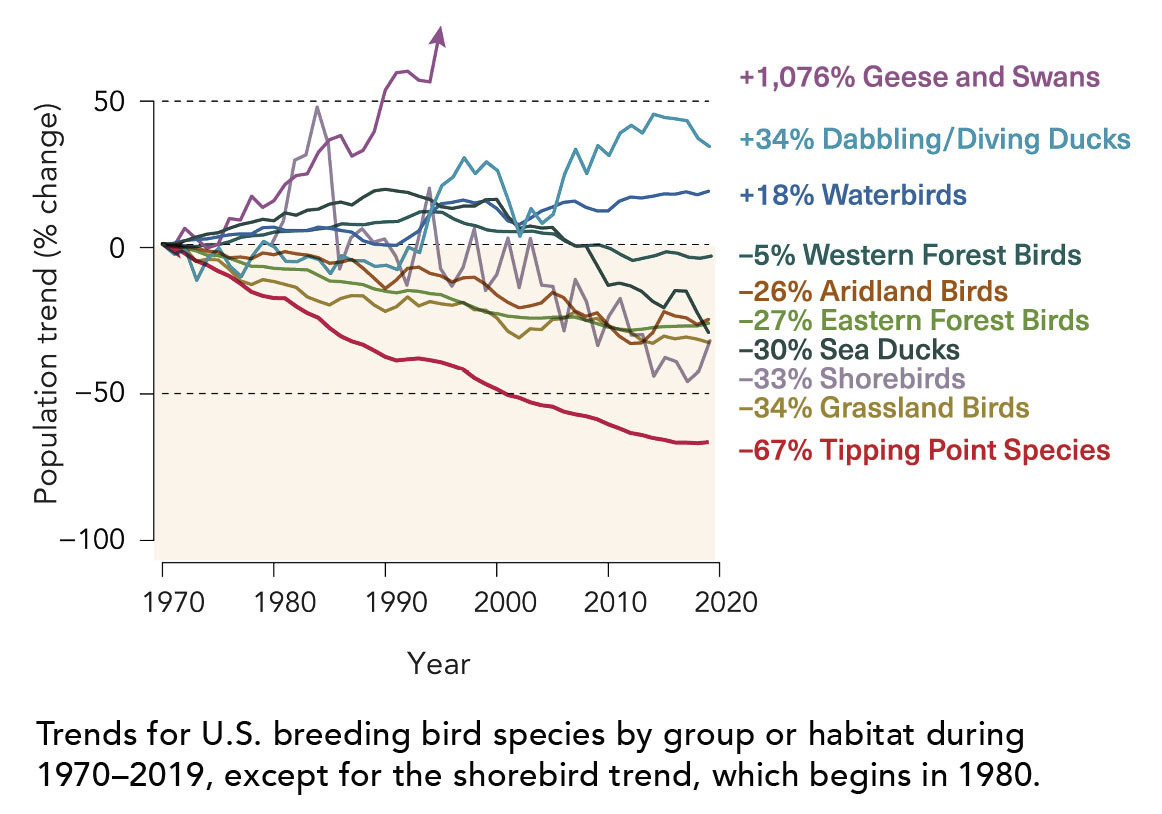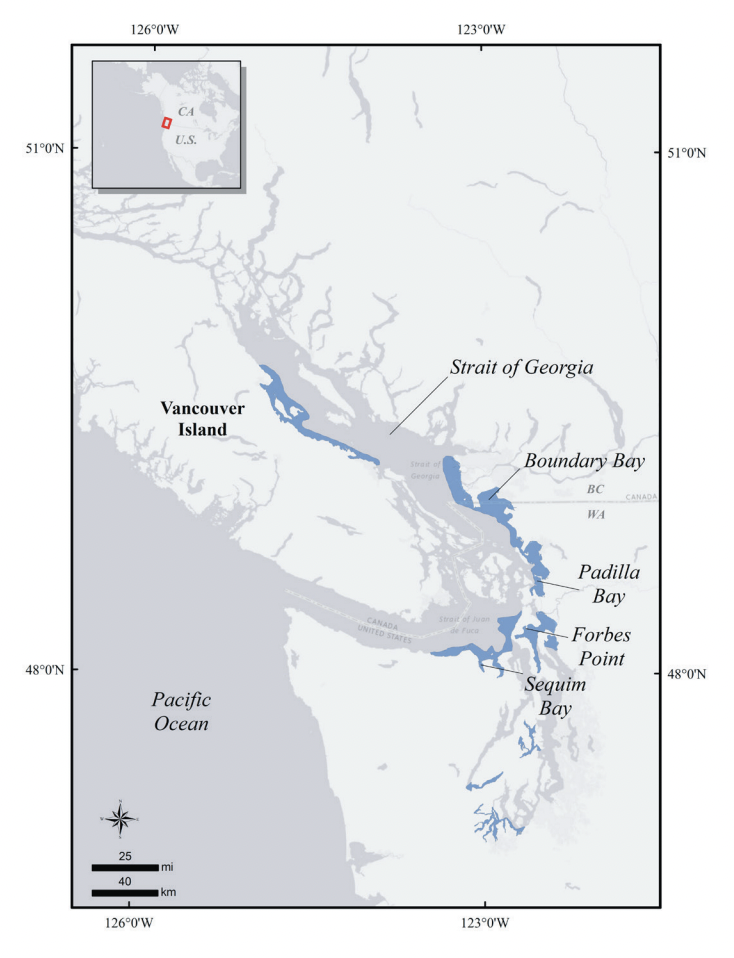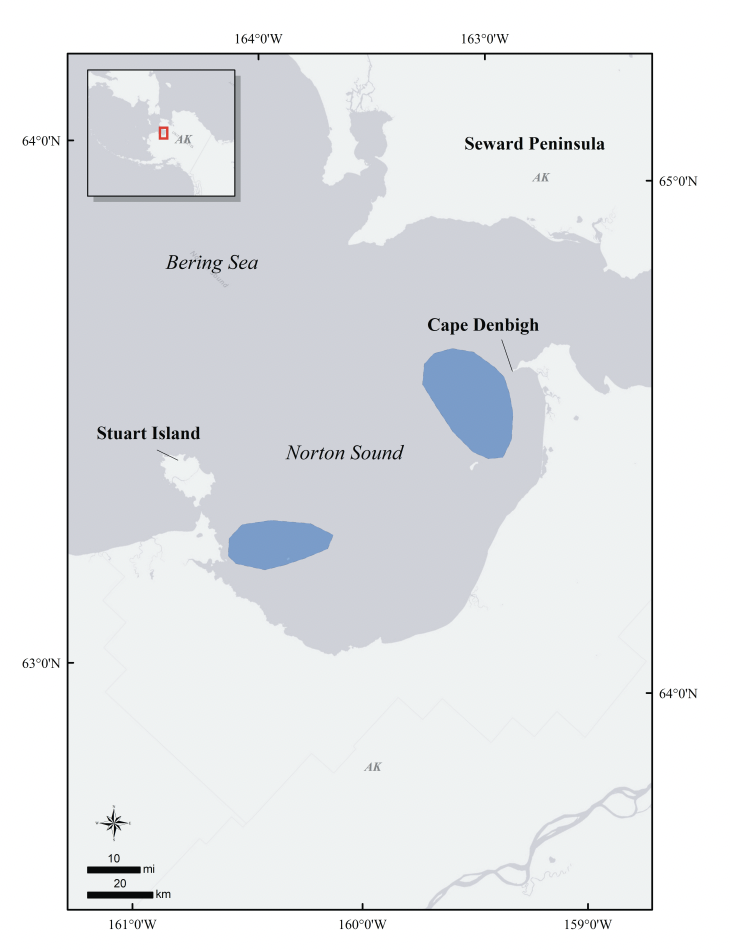
Tim Bowman, U.S. Fish & Wildlife Service
Thank you to Kate Martin, the Sea Duck Joint Venture U.S. Coordinator, for sharing her expertise about sea ducks in North America–their value, population trends, and the threats they face. She also tells us about a new conservation tool, the Sea Duck Key Habitat Sites Atlas.
About the Sea Ducks
Sea ducks are a unique group of waterfowl that inhabit arctic, subarctic, boreal, and coastal habitats. The fifteen species of sea ducks in North America, including eiders, scoters, mergansers, goldeneyes, Bufflehead, Long-tailed Duck, and Harlequin Duck, show great diversity in their striking, bold plumages and specialized bill morphologies. Their preferred habitats range from coastal estuaries, to tree cavities in the boreal forest, to the vast tundra and sea ice of the Arctic. In many places, sea ducks play an important role in the culture and food security of Indigenous peoples, and their beauty and unique behaviors intrigue birdwatchers and hunters.
While sea ducks are the least studied group of waterfowl in North America, the available evidence suggests that numbers of several sea duck species are declining or are below historical levels of abundance. Four populations of sea ducks are currently listed as threatened species in the U.S. or are of special concern in Canada.
While many waterfowl species have increased in the last few decades due to focused habitat and conservation efforts, sea ducks have not. The State of the Birds 2022 report indicated that sea ducks as a group have declined approximately 30% since 1970, and two species were identified as “Tipping Point” species: King Eider and Black Scoter. Tipping Point species have not only lost 50% or more of their population from 1970-2019, but are also projected to lose an additional 50% in the next 50 years without concerted conservation actions.

Most sea duck species are difficult to investigate because they inhabit remote locations, and they are difficult to capture and mark in large numbers for studies of demographics, survival, and migration patterns. Unfortunately, the ecosystems and sensitive habitats used by sea ducks are undergoing rapid environmental change and human development, and urgent action is needed to inform conservation and management decisions.
Gathering Partners and Knowledge to Inform Conservation
The Sea Duck Joint Venture (SDJV) is a conservation partnership that was formed under the auspices of the North American Waterfowl Management Plan to advance our knowledge about sea ducks and improve their conservation and management. It is one of three Species Migratory Bird Joint Ventures. Partners include the U.S. Fish and Wildlife Service, Canadian Wildlife Service, Environment Canada, U.S. Geological Survey, Bureau of Ocean and Energy Management, Ducks Unlimited Canada, Ducks Unlimited, Inc., Pacific Birds Habitat Joint Venture, Upper Mississippi/Great Lakes Joint Venture, and others. Since 2001, SDJV partners have completed many surveys and studies of sea ducks that have provided information on the distribution and abundance of sea ducks throughout the annual cycle and throughout North America.
In 2022 the SDJV consolidated this information into the Sea Duck Key Habitat Sites Atlas that identifies areas in North America that are essential to the welfare of sea ducks, and as a first step for ensuring that adequate quantity and quality of sea duck habitat remains intact. Strict criteria based on sea duck abundance and density were used to restrict key site designation to areas that are vital to sea ducks at a scale that is meaningful and practical in terms of habitat conservation and protection.
Nineteen key habitat sites have been identified along the Pacific coast. These sites range from remote areas of Alaska, such as Izembek Lagoon, to areas with high human habitation and impacts, such as San Francisco Bay. Izembek, a shallow lagoon formed by narrow barrier islands on north side of the Alaska Peninsula, contains the largest eelgrass bed in the world, which supports benthic prey important to sea ducks during the non-breeding season. Izembek is an important molting and staging area for Steller’s Eiders, particularly during spring migration, as well as Black Scoters and Long-tailed Ducks. While key habitats at Izembek are already in conservation, there are still threats to habitat from climate change. The barrier islands forming the lagoon are subject to erosion, which may increase due to sea level rise, reduced ice coverage in the southern Bering Sea, and increased frequency of storm tides. Eelgrass beds may be harmed by increases in sea level, and the marine invertebrate community (prey for sea ducks) could be impacted by increasing ocean temperatures and acidification. Other sites included in the Atlas are critically important to Spectacled Eiders, Surf Scoters, Common and Barrowʻs Goldeneye and other species.

Key Site: Salish Sea, Washington and British Columbia The Salish Sea is a biologically rich and dynamic system comprised of a wide variety of habitats including intertidal zones, pelagic waters, rocky reefs, coastal wetlands, and freshwater river estuaries. It is especially important to sea ducks of the Pacific Flyway during wintering, staging, spring migration, and molting. The site is a major wintering location for 11 species of sea ducks. Learn more about this site.

Key Site: Norton Sound The coastal waters of Norton Sound in northwest Alaska provide critical molting habitat for threatened Spectacled Eiders; nearly all western Alaska breeding females (>7000) molt in Norton Sound before wintering with the entire world population on polynyas in the Bering Sea. This site also supports Common and Steller’s Eider, Black and Surf Scoters, and Long-tailed Ducks. Learn more about the site.
Further south, the San Francisco Bay Joint Venture region is important to Pacific Flyway Surf Scoters and Buffleheads during migration and winter, where certain areas support densities of up to 27 surf scoters per km2. The Bay is characterized by a unique combination of tidal range, water depth, salinity, and sediments. It also has adjacent tidal channel networks and marsh and intertidal mudflats creating a rich diversity of wetland habitats and food resources. Far from remote, sea ducks in the Bay are vulnerable to habitat degradation, chronic contaminants, oil spill events, changes in profitable prey due to competition with invasive species, and disturbance from heavy shipping traffic.
Potential users of the Atlas include natural resource agencies involved in marine spatial planning, developers, environmental consultants, wildlife conservation groups, and other stakeholders. To date, the sea duck key habitat sites have been included in mapping applications for oil spill response planning in the Pacific and used in environmental assessments and marine spatial planning efforts in Pacific and Atlantic Canada.
Explore the Atlas at the Sea Duck Joint Venture website, where you can download the entire Atlas, individual site narratives, or regional sections.


